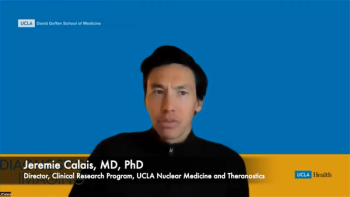
What Does a Radiologist Cost?
[INFOGRAPHIC] With medical school debt, fewer and lower paying jobs, and a general dark cloud around the field, how are radiologists faring?
What’s the hottest trend in radiology? It’s certainly not the
Diagnostic Imaging got some numbers from Tommy Bohannon, divisional vice president at
“In years past, there was a glut of recruitment [for radiology] from a competitive standpoint,” Bohannon said. He attributed the influx to the need to drive business from one imaging center to another, or from this group to that group.
Now, Bohannon said, radiology recruitment is more of an “as necessary” basis, making the market more selective and pushing the income down.
Merritt Hawkins publishes a yearly survey on physician and advanced practitioner recruiting incentives, radiology wasn’t even included in the 2014 survey because it didn’t fall into the top 20 most requested specialties. Eight years ago, radiology was in the top four of this same list, and in 2002-2003, radiology was the top requested specialty. Need the proof? Bohannon said that in radiology’s peak years, Merritt Hawkins recruited for over 200 job openings; this year to date, Merritt Hawkins has recruited for only seven.
“When radiology was frequently requested, it wasn’t uncommon for us to have a number of jobs offering $500,000, 12–15 weeks of vacation, and a $100,000 signing bonus,” Bohannon said.
Times have changed. In 2007, the year with Merritt Hawkins’ highest starting salary for radiologists, the company recruited 43 positions starting at $425,000. In 2013, they recruited seven radiologists with a starting salary of $365,000.
Bohannon attributes the market softening to the decline in demand, reimbursement cuts, and increased scrutiny on unnecessary testing and screening.
Market fluctuations are common, and expected, in every industry, but Bohannon noted that “it’s very unusual for this long of a period of time for [a specialty’s] income to remain this flat or be slightly down.”
That’s not super reassuring. So let’s change pace and get down to the numbers. Diagnostic Imaging compiled data from Merritt Hawkins, the
[[{"type":"media","view_mode":"media_crop","fid":"27970","attributes":{"alt":"","class":"media-image","id":"media_crop_9259670132305","media_crop_h":"0","media_crop_image_style":"-1","media_crop_instance":"2793","media_crop_rotate":"0","media_crop_scale_h":"0","media_crop_scale_w":"0","media_crop_w":"0","media_crop_x":"0","media_crop_y":"0","style":"line-height: 1.538em;","title":" ","typeof":"foaf:Image"}}]]
Newsletter
Stay at the forefront of radiology with the Diagnostic Imaging newsletter, delivering the latest news, clinical insights, and imaging advancements for today’s radiologists.




























